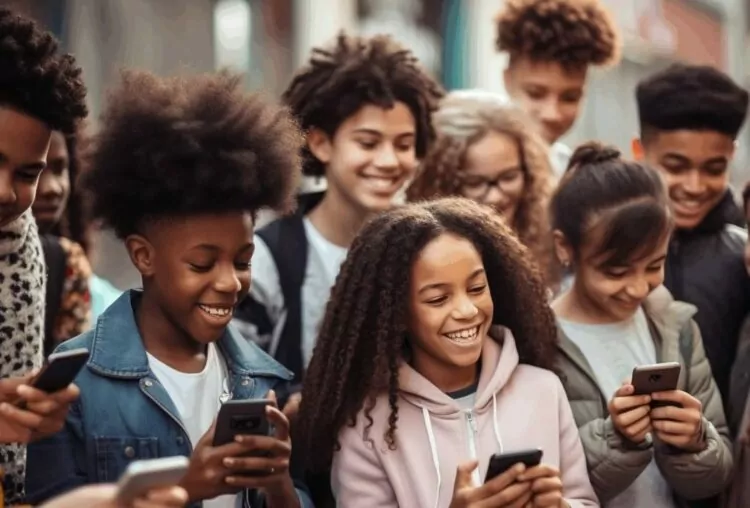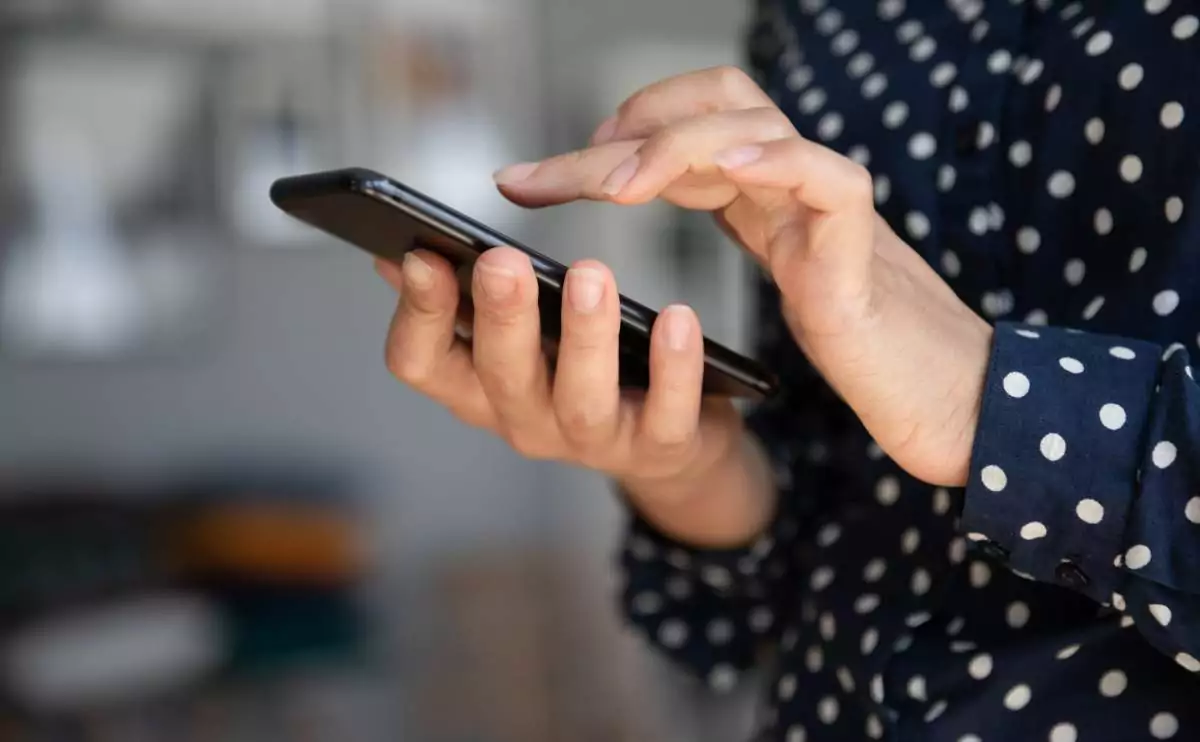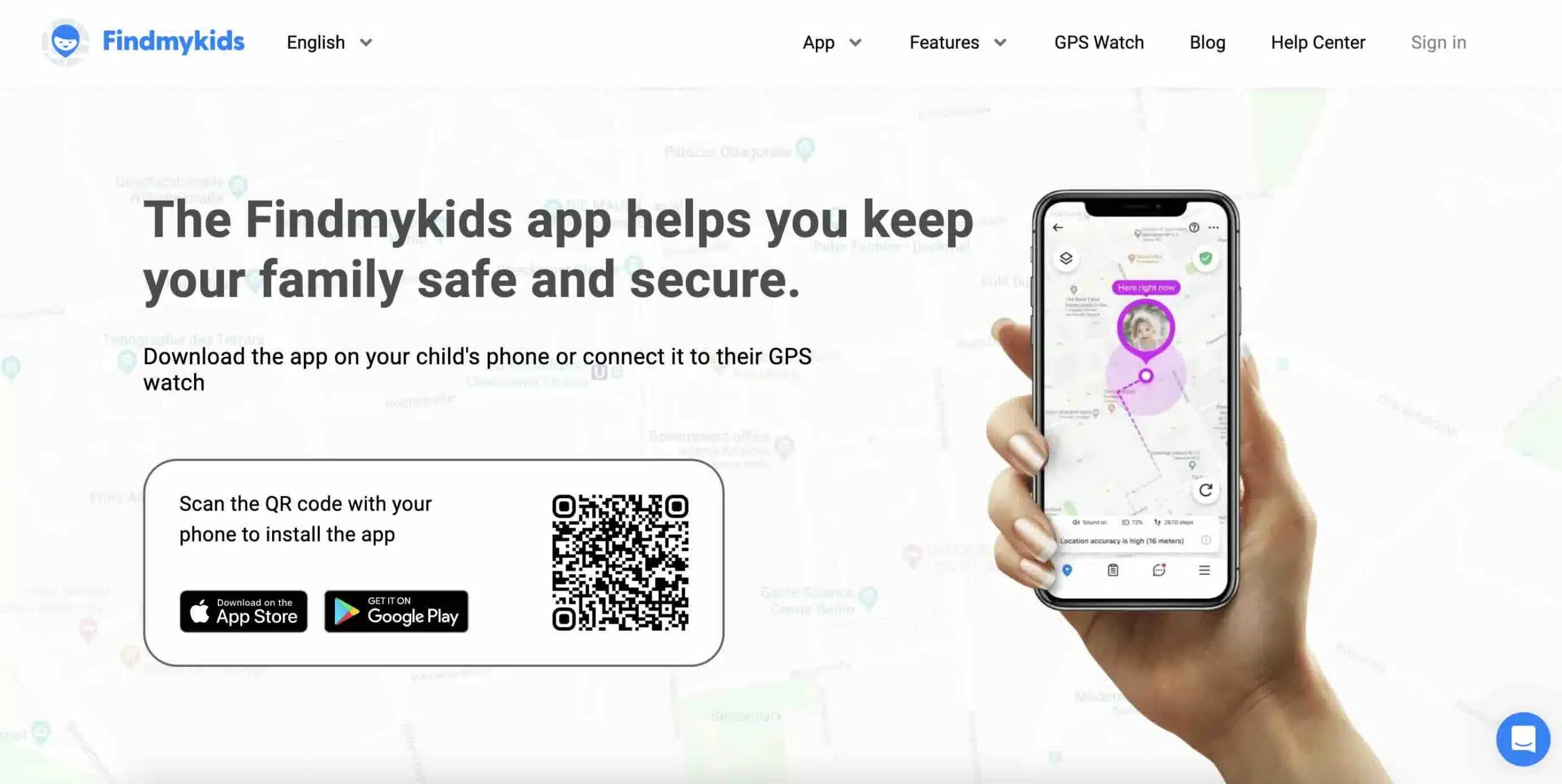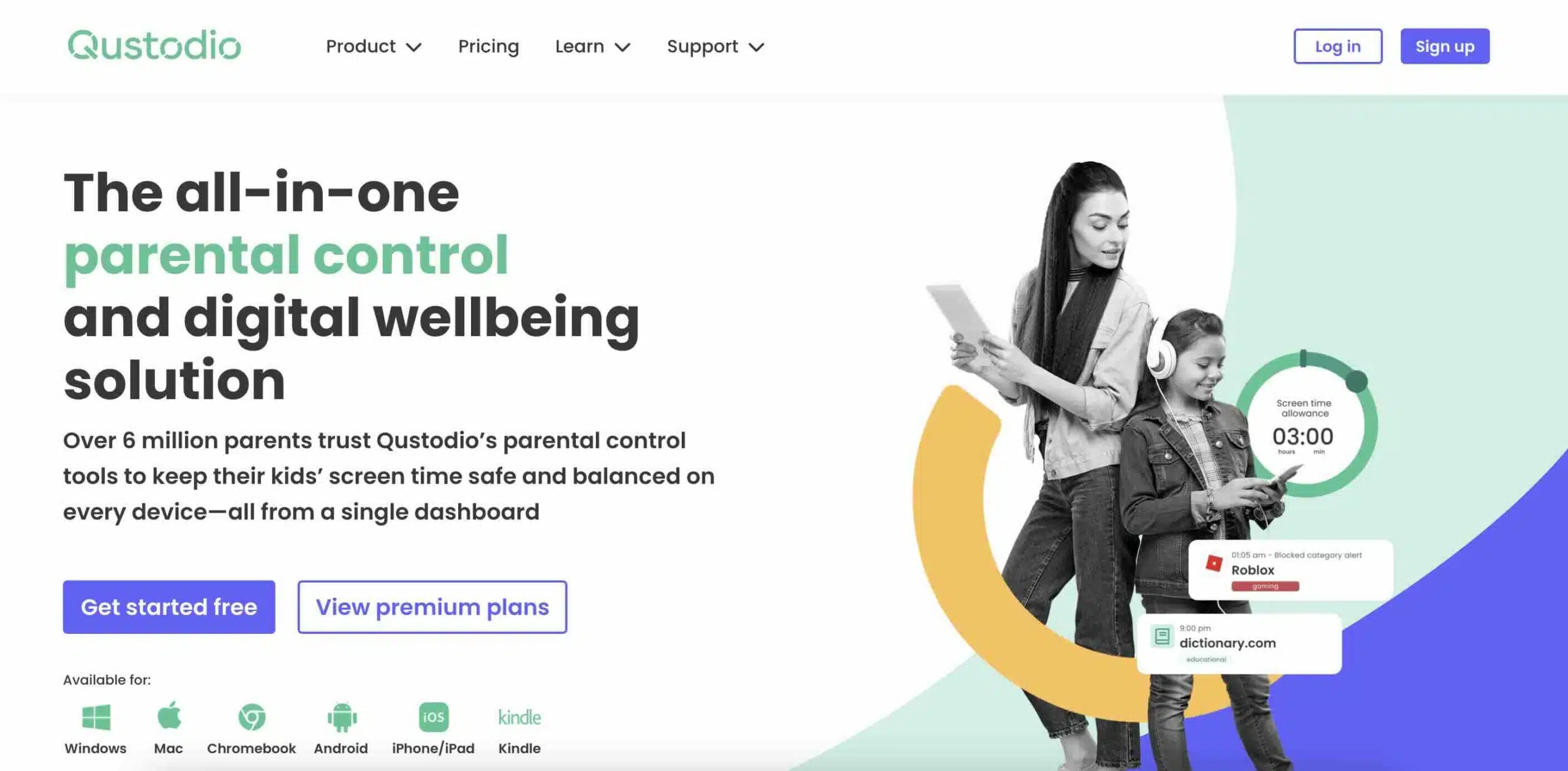As parents, our children’s safety and well-being are always our top priority. With the rise of technology and the widespread use of smartphones, it can be challenging to keep track of our child’s online activity. However, with the help of parental controls and monitoring apps, we can ensure their safety while still giving them the freedom to explore and use their iPhones.
In this blog post, we will discuss how you can monitor your child’s iPhone and put on parental controls to protect them from potential online dangers. So, parents, buckle up and get ready to learn, “Can I lock my child’s iPhone remotely?” and “How to Put parental controls on iPhone.”

Understanding the Need for Parental Controls on iPhones
In this digital age, our children have grown up with technology at their fingertips. With iPhones becoming an essential part of their lives, it is important for parents to understand the need for parental controls on these devices. While it may seem intrusive or overprotective, implementing parental controls is crucial in ensuring our children’s safety and well-being.
One of the main reasons why parental controls are necessary is to protect our children from the potential dangers of the internet. The online world can be a breeding ground for cyberbullying, inappropriate content, and online predators. By enabling parental controls on our child’s iPhone, we can filter and block certain websites or applications that may pose a risk to their safety. It allows us to have peace of mind knowing that our children are browsing the internet in a secure environment.
Parental controls also play a role in managing screen time and ensuring a healthy balance between online and offline activities. Excessive use of smartphones can lead to a sedentary lifestyle, sleep disturbances, and even affect their academic performance. By setting time limits and restrictions on app usage, we can encourage our children to engage in other activities such as outdoor play, reading, or spending quality time with family and friends.
Furthermore, parental controls on iPhones give us the ability to track our child’s location. This feature can be especially useful in emergency situations or when our child is out with friends. Knowing their whereabouts can provide us with peace of mind and a sense of security.
Now that we understand the need for parental controls on iPhones, we can move on to the practical steps of how to monitor our child’s iPhone activities and configure parental controls. By taking proactive measures, we can create a safe and healthy online environment for our children. So, let’s dive into the next section and learn how to lock our child’s phone remotely and put parental controls on their iPhones.

Steps to Monitor Your Child’s iPhone Activities
Now that we understand the importance of parental controls and monitoring our child’s iPhone activities, let’s dive into the practical steps of how to monitor their iPhone effectively. These steps will ensure that we can keep track of our child’s online behavior and protect them from potential dangers.
1. Enable Find My iPhone: The first step in monitoring your child’s iPhone is to enable the Find My iPhone feature. This feature allows you to locate your child’s device in case it gets lost or stolen. By activating this feature, you can track the location of their iPhone using your own device.
2. Set up Screen Time: Screen Time is a built-in feature in iOS that allows you to set limits on your child’s device usage. To set up Screen Time, go to Settings > Screen Time > Turn on Screen Time. From there, you can customize the limits for app usage, content restrictions, and downtime.
3. Use Parental Control Apps: There are numerous parental control apps available in the App Store that can download on the phone that will help you monitor your child’s iPhone activities. You will need the password associated with the Apple ID in order to download any app, so keep that in mind.
These apps allow you to track their online behavior, block inappropriate content, and set time limits for app usage. Some popular parental control apps include Qustodio, Norton Family, and FamilyTime.
Could My Kid Just Delete The App?
Parental control apps like Qustodio, Norton Family, and FamilyTime are designed with the understanding that children might try to bypass the restrictions set by their parents. Therefore, these apps typically include features to prevent easy removal. Here’s how they generally handle attempts at deletion:
- Administrator Rights: When you install a parental control app on your child’s device, you often have to give it administrator rights. This means the app cannot be deleted without first removing these rights, which typically requires a password that only the parent knows.
- Tamper Alerts: Many parental control apps will notify the parent if there is an attempt to delete the app or tamper with any of its settings.
- Hidden Mode: Some apps can operate in a stealth mode, meaning they don’t show up in the usual list of applications, making it harder for a child to attempt to delete them.
- Device Restrictions: For iOS devices, you can use the built-in Screen Time settings to prevent the deletion of apps. By going to Settings > Screen Time > Content & Privacy Restrictions, you can set up a passcode that restricts changes to apps and other settings.
- Regular Monitoring: Parents are encouraged to regularly monitor the devices and the parental control app’s dashboard to ensure everything is functioning as expected.
Despite these measures, a tech-savvy teenager might still find ways to circumvent the controls, especially if they perform a factory reset or use other sophisticated methods. That’s why it’s crucial to maintain an open dialogue about the purpose of these controls and to foster an environment of trust, rather than relying solely on the technology to enforce rules.
4. Regularly Check Browsing History and Social Media: One of the simplest ways to monitor your child’s online activities is by regularly checking their browsing history and social media accounts. By doing this, you can ensure that they are not accessing any inappropriate websites or engaging in harmful conversations online.
5. Familiarize Yourself with the Parental Controls Settings: iOS provides various parental control settings that can be customized according to your child’s needs. Take some time to explore the settings and familiarize yourself with options such as restricting app downloads, blocking explicit content, and enabling restrictions on certain features.
By following these steps, you can effectively monitor your child’s iPhone activities and ensure their safety online. Remember, communication is key, so make sure to have open and honest conversations with your child about internet safety and responsible device usage. With the right tools and guidelines in place, we can create a secure online environment for our children and give them the freedom to explore their digital world safely.
Other App Alternatives
Aside from parental controls and monitoring apps, there are other tools that can help you monitor your child’s iPhone activity.
For instance, the Findmykids app sends notifications when your child reaches specific locations, ensuring their safety and giving you peace of mind.

Alongside location tracking your child loaction, you might be wondering, ‘Can I lock my child’s iPhone remotely?’ The answer is yes. Using the ‘Find My iPhone’ feature, not only can you locate the device, but you can also put it in Lost Mode, which locks the iPhone with a passcode, displaying a custom message and disabling most functionalities. This ensures that if your child’s iPhone is lost or stolen, their personal information remains secure.
Configuring Parental Controls: Tips and Tricks
Now that you understand the importance of parental controls and how to monitor your child’s iPhone activities, let’s dive into some tips and tricks for configuring parental controls. These tips will help you make the most out of the parental control settings on your child’s iPhone and ensure their safety online.
1. Customize Restrictions: Take the time to explore the parental control settings on your child’s iPhone and customize them according to their needs. You can restrict explicit content, disable certain features like in-app purchases or app downloads, and even set age-appropriate content ratings for movies, music, and apps. By tailoring the restrictions to your child’s age and maturity level, you can create a safe and secure digital environment.
2. Set Up Communication: Parental controls should never hinder communication between you and your child. Make sure to set up communication channels that are safe and secure. Encourage your child to come to you if they encounter any inappropriate content or online bullying. Create an atmosphere of trust and open communication so that your child feels comfortable reaching out to you.
3. Educate Your Child: Along with configuring parental controls, it is important to educate your child about online safety and responsible device usage. Teach them about the potential risks and dangers of the internet and how to protect themselves. Emphasize the importance of privacy and remind them not to share personal information with strangers online.
4. Regularly Review and Update: As your child grows and their online habits change, it is crucial to regularly review and update the parental control settings on their iPhone. Stay informed about the latest trends in online safety and adjust the settings accordingly. This will ensure that your child is protected from evolving online threats.
By following these tips and tricks, you can effectively configure parental controls on your child’s iPhone and create a safe digital environment for them. Remember, technology is constantly evolving, so it’s important to stay updated and adapt your approach as needed. With the right combination of parental controls and open communication, you can keep your child safe while still allowing them to explore and enjoy their digital world.

Navigating Popular Apps for Safe Usage
Navigating popular apps for safe usage is an important aspect of ensuring your child’s safety while using their iPhone. With the multitude of apps available, it can be overwhelming to determine which ones are safe and appropriate for your child. In this section, we will explore some tips and strategies for navigating popular apps and ensuring that your child is using them safely.
First and foremost, it is crucial to educate yourself about the apps your child is using. Take the time to research and understand the features and potential risks associated with each app. This will allow you to make informed decisions about whether or not the app is appropriate for your child. Familiarize yourself with the app’s privacy settings, age restrictions, and community guidelines.
When it comes to social media apps, such as Instagram, Snapchat, or TikTok, it’s essential to set clear boundaries and guidelines for your child’s usage. Talk to them about responsible social media behavior, such as not sharing personal information, being mindful of their digital footprint, and treating others with respect online. Encourage them to follow age-appropriate accounts and report any suspicious or inappropriate content they may come across.
Another important aspect of navigating popular apps is staying updated on the latest trends and challenges that may be circulating on these platforms. Keeping an open line of communication with your child and staying informed about the content they are consuming will help you identify any potential risks or concerns. Encourage your child to come to you if they have any questions or encounter anything that makes them uncomfortable.
Lastly, don’t forget to utilize the parental control features available within these apps. Most popular apps offer settings that allow parents to monitor and restrict their child’s usage. Take advantage of these features to set time limits, block certain content, or disable certain features that may not be appropriate for your child. Familiarize yourself with these settings and adjust them as needed to ensure your child’s safety.
Keeping a Balance: Privacy vs Protection
When it comes to monitoring your child’s iPhone activity and implementing parental controls, it’s essential to strike a balance between privacy and protection. While it’s important to safeguard your child from online dangers, it’s also crucial to respect their privacy and give them a sense of autonomy. So, how can you maintain this delicate balance?
First and foremost, open communication is key. Talk to your child about why you are implementing parental controls and monitoring their iPhone activity. Explain that it is for their safety and well-being, rather than an invasion of their privacy. By having an open and honest conversation, you can foster trust and understanding between you and your child.
Next, establish clear boundaries and guidelines. Let your child know what is expected of them when using their iPhone.
Discuss appropriate online behavior, such as not sharing personal information or engaging in cyberbullying. Setting these boundaries will help your child understand the importance of responsible device usage.
Additionally, involve your child in the decision-making process. Allow them to have some say in the parental controls and monitoring apps you choose to implement. By giving them a voice, you are empowering them and respecting their autonomy.
It’s also crucial to periodically check in with your child and have discussions about their online experiences. Ask them about any concerns or issues they may have encountered and offer guidance and support. By maintaining an open line of communication, you can address any potential risks or challenges together.
Finally, remember to balance the use of parental controls with fostering independence and digital literacy. As your child grows older and becomes more responsible, gradually loosen the reins on parental controls and allow them to take more ownership of their online safety. Educate them about the importance of making smart choices and staying vigilant online.
In conclusion, maintaining a balance between privacy and protection is essential when monitoring your child’s iPhone activity. By promoting open communication, setting boundaries, involving your child, checking in regularly, and fostering independence, you can create a safe and secure online environment while respecting their privacy.
So, go ahead and find the right balance for your family, and remember, you are doing this to protect your child and empower them to navigate the digital world safely.




